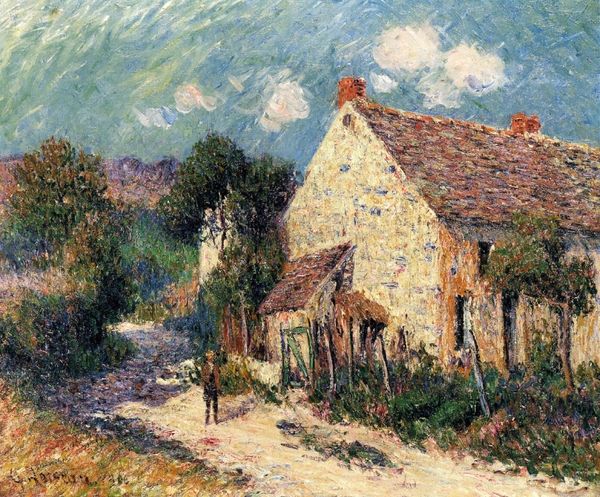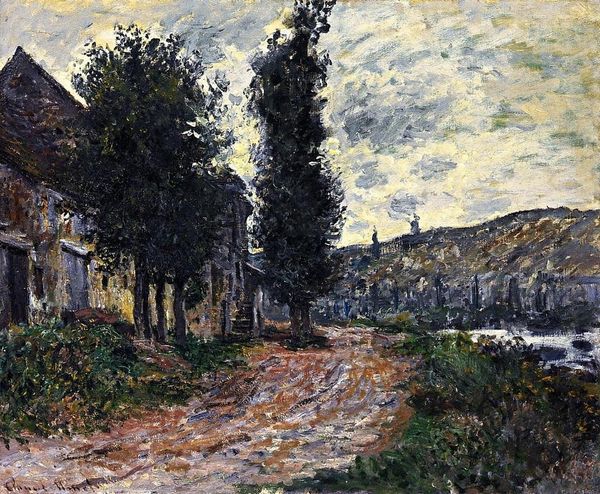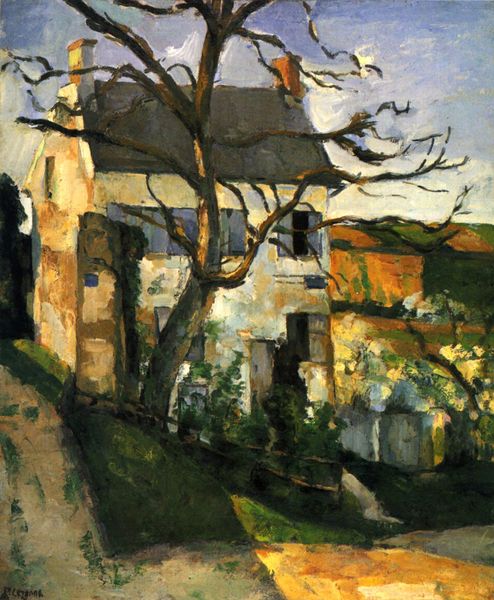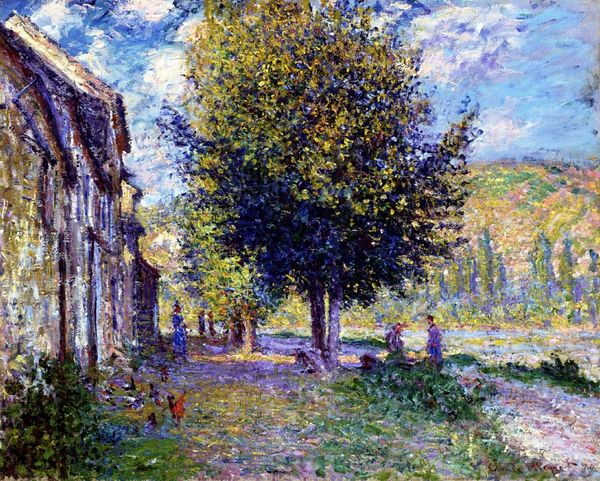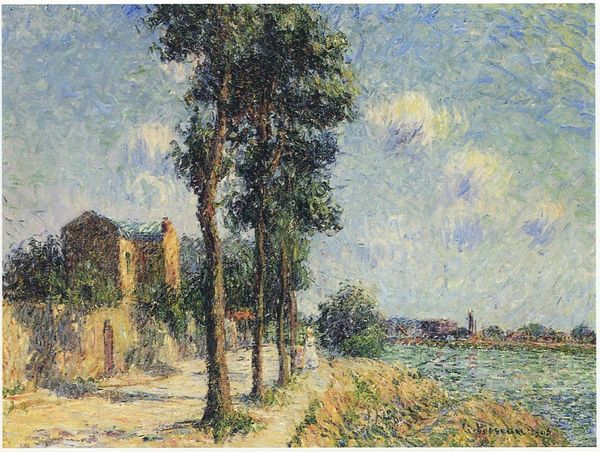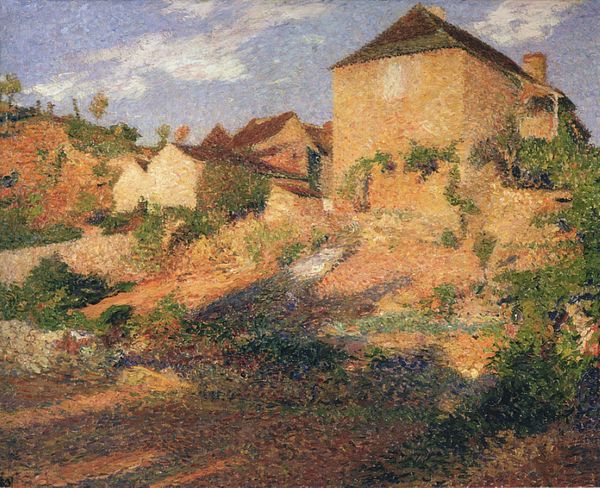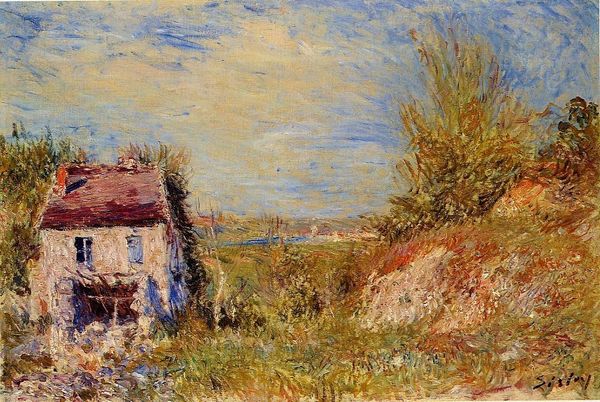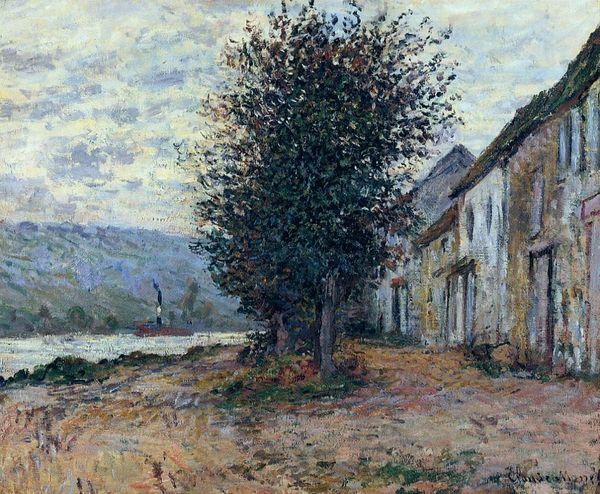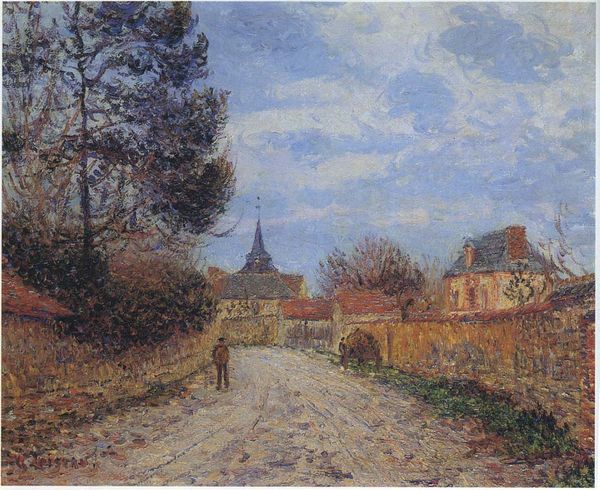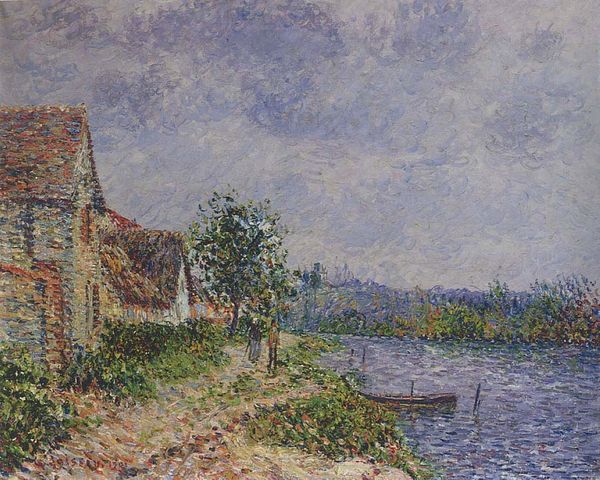
Copyright: Public domain
Editor: This is "Rocks at Falaise near Giverny," an 1885 oil painting by Claude Monet. It's got a warm, earthy palette and loose brushstrokes... What stands out to me is how the road seems to invite you into the landscape. How do you interpret this work? Curator: Well, it's tempting to see just another pretty landscape, right? But consider Monet as an active agent within a changing society. Think about the rise of industrialization, urbanization. Monet, painting en plein air, is not just capturing scenery, but a specific relationship to place, resisting the alienation of modern life. What’s highlighted, and what's obscured in his rendering? Editor: I see your point. The buildings on the left seem almost secondary, like the natural world is pushing back. Do you think he's making a statement about the impact of humanity on nature? Curator: Precisely. And how does that resonate today, in our era of climate crisis? This wasn’t just a formal exercise, but an engagement with critical issues. Consider who had access to these landscapes in the late 19th century, and who was excluded? The artwork itself, then, becomes a point of dialogue, does it not? Editor: I guess I had never really considered those implications before... It's definitely given me a new way of looking at Impressionism! Curator: Exactly! Art is not made in a vacuum; by exploring its context we reveal its true power.
Comments
No comments
Be the first to comment and join the conversation on the ultimate creative platform.


